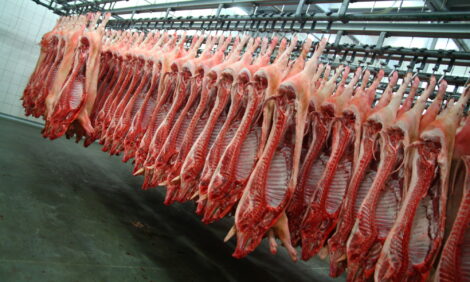



Considerations for the Large Group Housing of Pigs: Part 3
By the Prairie Swine Center - This is Part 3 of 4 of a special document outlining some considerations for the large groups housing of hogs.
VIII Performance and Productivity of Animals
Positives:
It has been reported that some farms have achieved as much as $10-15 / pig in improved revenues when tightening the number of pigs shipped within the targeted carcass window. The net result on one survey of 2,500 head was an increase of $3.50 per pig on the entire barn when we achieve over 90% in core of market grid.
The uniformity of market weights would not necessarily be better than weighing and sorting all the pigs manually, but will in all probability be better than weighing a few pigs and ‘eyeballing’ the rest. There are at least some operators that are exceptionally proficient at estimating market weights by visually assessing the pig and for these operators there may be fewer advantages.
Average daily gain (ADG) remains similar to conventional groups (Source: Dr. Harold Gonyou - review showed less than 2% decline in ADG in LGH)
There is no apparent increase or decrease in pen body weight variation using LGH.
Vices may affect a greater proportion of pigs in the LGH building, as more pigs are at risk than in small groups. The pig that is biting or nuzzling potentially has more pigs available on which to express the undesirable behaviour.
There has been no apparent increase or decrease in variation of body weight when comparing LGH vs. small pen groups.
IX Health
Positives:
Disease-causing agents such as Salmonella can be harboured in hard-to-clean cracks such as those under pen partitions that are difficult to clean. LGH has fewer pen partitions.
Animals can escape within the pen and avoid injury
Hospital pen plays a prominent role within the room facilities and it is easier to reintroduce pigs into the main group once treatment is complete
Early detection of health problems is enhanced when pigs are up and moving
There may be an increased risk of health problems spreading throughout the barn. Diseases that rely on nose-to-nose contact or oral/fecal contamination may present more risk because of the increased number of pigs that can be contacted by the initially infected pig.
Vaccination is more difficult and there is a need to develop a system for ease of handling for efficient vaccination.
The daily health check must be more intensive in order to observe sick pigs in the larger group. Sick pigs may be harder to handle when they are being moved to a sick pen.
Early detection of health problems is enhanced when the pigs are up and moving about.
X Animal Welfare
Positives:
The pen space associated with LGH is more spacious and environmentally enriched. There is more room for the pig to explore and to escape another pig’s aggressive behavior.
It has been proposed that the public perception of LGH may be more positive due to the perception of more space per pig.
It appears there is a reduction in the amount of fighting when stocking an LGH configuration.
Ease of animal handling is enhanced and there is less stress associated with moving animals into and out of the large groups.
Regrouping of pigs for ease of loading at marketing results in little or no fighting.
Co-mingling at close-out is easier when pigs come from large groups and are moved into small pens.
Livestock transporters have reported that group-housed pigs are easier to handle at loading and unloading.
There does not appear to be any increase in the incidence of social vices such as tail biting in LGH.
Injured animals may be more difficult to find.
XI Pork Quality/Food Safety
Positives:
Better carcass quality due to:
Less stress and fighting when pigs are co-mingled prior to shipping
Barn managers and truckers report handling and movement of pigs from large groups is easier than pigs housed in small pens
Potentially fewer carcass demerits at processing with easier handling at market
More pigs shipped in the desired weight range provide a more uniform carcass at processing targets the size of cuts that the consumer desires thus increasing true demand for pork
The removal of feed prior to marketing reduces porcine stress syndrome (PSE) meats and this is facilitated more easily with the LGH configuration
It is more likely that a treated pig will need to be removed from the large group when medicated so the quality assurance requirements are satisfied and marketing can continue
XII Economics
The economics of incorporating LGH into your operation will depend largely on whether you have suitable facilities for renovation, or if new construction is required to accommodate this management system. Figure 4 shows some of the potential costs and savings resulting in an advantage of about $4-5 per pig using LGH by taking advantage of lower barn and labour costs through reduced penning purchase or replacement costs and the purchase of an auto sorter. Additional details on costs and benefits can be found in the Appendix.
XIII Conclusions
Large group housing offers significant benefits in the areas of better space utilization, reduced labour, improved stockperson working conditions, and improved ability to select more pigs within the marketing grid core.
Further information
To read Part 1 please click here
To read Part 2 please click here
Source - Prairie Swine Centre - August 2004








